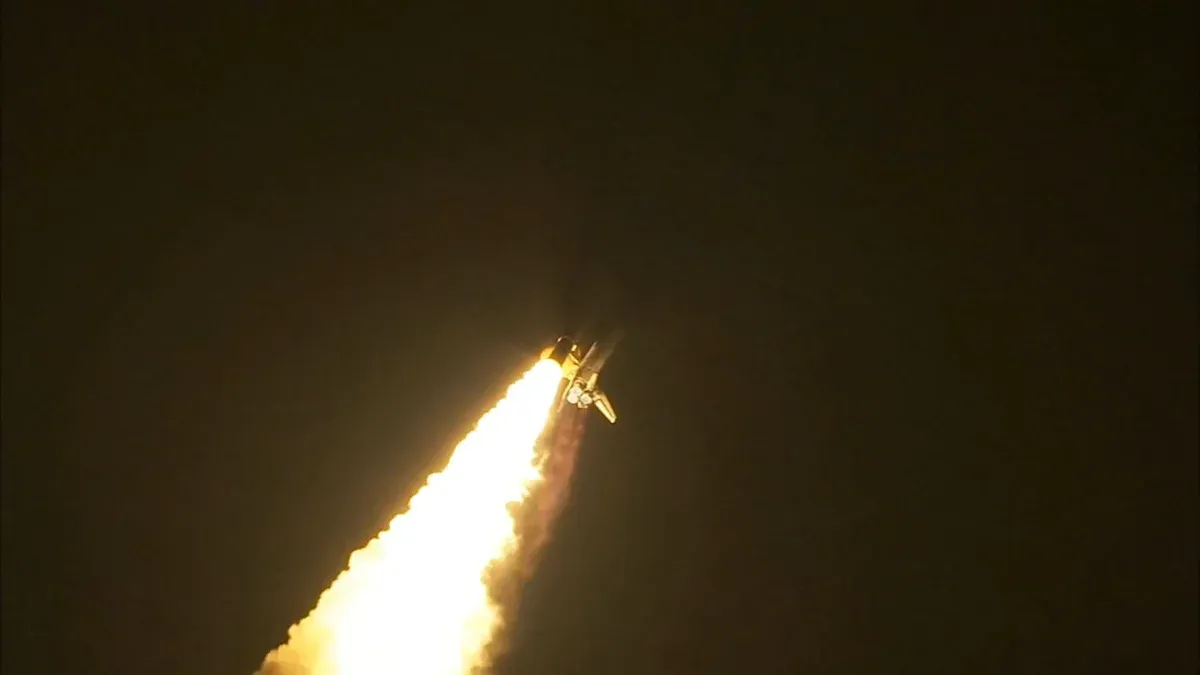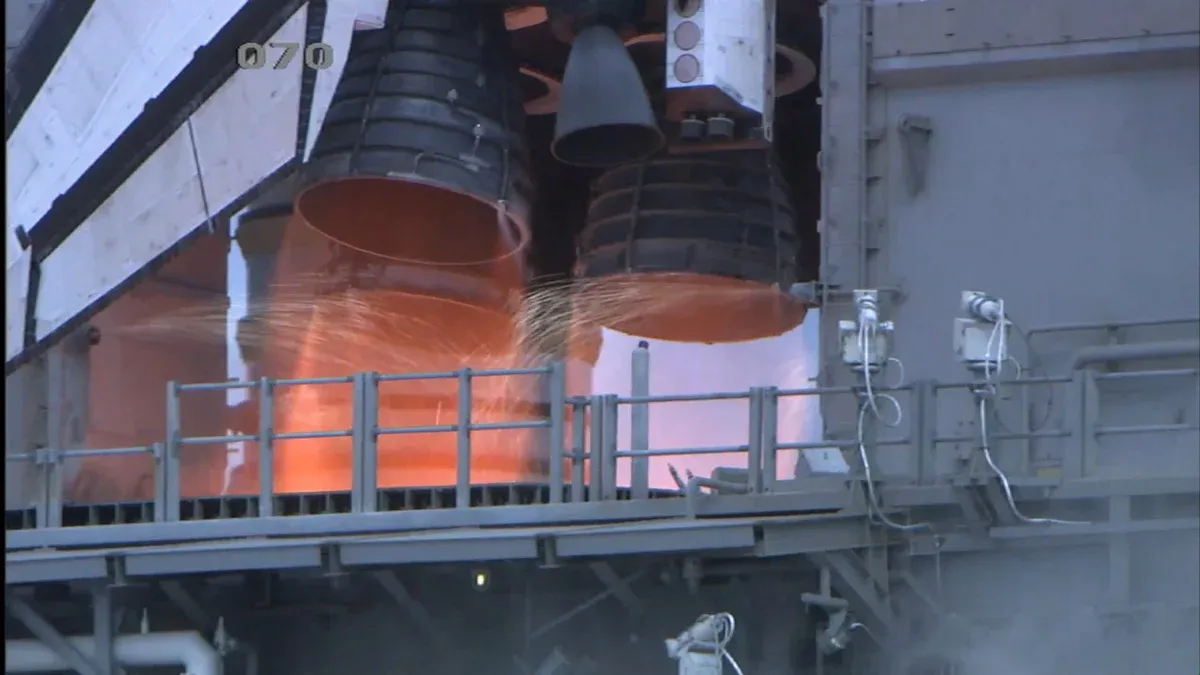
Rocket nozzles endure extreme heat during propulsion, often exceeding thousands of degrees Fahrenheit. You need materials that can withstand such conditions without breaking down. TaC coating offers unmatched thermal resistance and durability. Unlike SiC coating, which is also heat-resistant, TaC coating excels in high-stress applications. Using CVD coating methods ensures precision and performance.
Key Takeaways
- TaC Coating handles extreme heat, keeping rocket nozzles safe at over 7,000°F.
- It stops damage from wear and rust, making nozzles last longer and cutting repair costs.
- Special methods like Chemical Vapor Deposition create even, strong coatings needed for tough space missions.
Challenges of Extreme Heat in Rocket Nozzles

Heat and Stress Factors in Rocket Propulsion
Rocket nozzles face some of the most extreme conditions in aerospace engineering. During propulsion, temperatures can soar to over 5,000°F. This intense heat comes from the combustion of rocket fuel, which generates high-energy exhaust gases. These gases flow through the nozzle at supersonic speeds, creating immense thermal and mechanical stress. You can imagine how this combination of heat and pressure can quickly degrade materials.
The rapid heating and cooling cycles during a mission add another layer of complexity. Materials expand and contract under these conditions, which can lead to cracks or structural failure. Without proper protection, the nozzle could erode or even melt, jeopardizing the entire mission. This is why engineers constantly seek materials that can endure such harsh environments.
The Need for Advanced Protective Coatings
To combat these challenges, you need advanced protective coatings that can handle extreme heat and stress. Traditional materials often fall short when exposed to the high temperatures and corrosive nature of rocket exhaust. This is where TaC Coating comes into play. Its exceptional thermal resistance and durability make it a top choice for aerospace applications.
TaC Coating acts as a shield, protecting the nozzle from heat, erosion, and oxidation. It maintains its integrity even under the most demanding conditions. By using this coating, you can extend the lifespan of rocket nozzles and improve their performance. This innovation is critical for modern rocketry, where reliability and efficiency are non-negotiable.
Properties of TaC Coating
Thermal Resistance and High-Temperature Stability
When it comes to extreme heat, TaC Coating stands out as one of the most reliable materials. It can endure temperatures exceeding 7,000°F, making it ideal for rocket nozzles. This high thermal resistance ensures that the coating remains stable even during the most intense propulsion phases. Unlike other materials, it does not break down or lose its protective properties under prolonged exposure to heat.
You might wonder how this is possible. The secret lies in the unique structure of TaC Coating. Its tightly bonded carbon and tantalum atoms create a material that resists thermal degradation. This stability allows rocket nozzles to perform consistently, even in missions that demand repeated heating and cooling cycles. By using this coating, you can ensure that the nozzle maintains its shape and functionality, no matter how extreme the conditions.
Durability Against Erosion and Oxidation
Rocket nozzles face more than just heat. High-speed exhaust gases and corrosive elements can erode the surface over time. TaC Coating provides a robust defense against these challenges. Its hard surface resists erosion caused by the abrasive particles in exhaust gases. This durability helps extend the lifespan of the nozzle, reducing the need for frequent replacements.
Oxidation is another major concern in aerospace applications. When exposed to oxygen at high temperatures, many materials begin to degrade. TaC Coating, however, forms a protective layer that prevents oxidation. This feature ensures that the nozzle remains intact, even in oxygen-rich environments. By applying this coating, you can protect the nozzle from both physical and chemical damage, ensuring reliable performance throughout the mission.
Chemical Composition and Aerospace Suitability
The chemical composition of TaC Coating makes it uniquely suited for aerospace applications. It consists of tantalum and carbon, two elements known for their exceptional strength and stability. Together, they form a compound that can withstand the harshest conditions without compromising its integrity.
This composition also makes the coating lightweight, which is a critical factor in aerospace design. Every ounce matters when launching a rocket, and TaC Coating provides protection without adding unnecessary weight. Its compatibility with other materials used in rocket construction further enhances its appeal. You can apply it to various substrates, ensuring a seamless integration into the nozzle design.
In addition to its physical properties, TaC Coating meets stringent aerospace standards. It undergoes rigorous testing to ensure it can handle the demands of modern rocketry. By choosing this coating, you are investing in a proven solution that enhances both safety and efficiency.
Application of TaC Coating

Methods for Applying TaC Coating
Applying TaC Coating requires precision to ensure it performs effectively under extreme conditions. One of the most common methods is Chemical Vapor Deposition (CVD). In this process, you introduce tantalum and carbon-containing gases into a high-temperature chamber. These gases react and form a thin, uniform layer of TaC Coating on the nozzle’s surface. This method ensures excellent adhesion and a smooth finish.
Another technique is Physical Vapor Deposition (PVD). Here, you use a vacuum environment to deposit the coating. Tantalum and carbon are vaporized and then condensed onto the nozzle. This method works well for smaller components or when you need a thinner coating. Both methods allow you to control the thickness of the coating, which is crucial for balancing protection and weight.
For larger-scale applications, thermal spraying is another option. This involves heating the coating material to a molten state and spraying it onto the nozzle. While this method is faster, it may not provide the same level of precision as CVD or PVD. Choosing the right application method depends on the specific requirements of the rocket nozzle and the mission.
Ensuring Uniformity and Adhesion
Uniformity and adhesion are critical for the effectiveness of TaC Coating. A non-uniform coating can lead to weak spots, which may fail under high stress. To achieve uniformity, you must carefully control the application process. For example, in CVD, maintaining consistent temperature and gas flow ensures even deposition across the nozzle’s surface.
Adhesion is equally important. If the coating does not bond well to the nozzle, it can peel or crack during operation. Surface preparation plays a key role here. Before applying the coating, you must clean and roughen the nozzle’s surface. This helps the coating adhere more effectively. Advanced techniques like plasma etching can further enhance adhesion by removing impurities and creating a textured surface.
Regular inspections during the application process help you identify and correct any issues. Using tools like scanning electron microscopes, you can check for defects or inconsistencies in the coating. These steps ensure that the TaC Coating performs reliably, even in the harshest conditions.
Testing for Aerospace Standards
Before a rocket nozzle coated with TaC Coating can be used in a mission, it must pass rigorous testing. These tests ensure the coating meets the high standards required for aerospace applications. One common test is thermal cycling. In this test, you expose the nozzle to repeated heating and cooling cycles to simulate real-world conditions. This helps verify the coating’s thermal resistance and stability.
Erosion testing is another critical step. High-speed particles are directed at the coated surface to evaluate its durability. This test ensures the coating can withstand the abrasive forces of exhaust gases. Oxidation resistance is also tested by exposing the coating to oxygen-rich environments at high temperatures. This confirms that the coating will not degrade during operation.
Finally, adhesion tests are conducted to measure how well the coating bonds to the nozzle. These tests involve applying force to the coating and checking for peeling or cracking. By passing these tests, TaC Coating proves its reliability and suitability for aerospace missions.
Real-World Applications of TaC Coating
Examples in Modern Rocketry
Vous pouvez trouver TaC Coating in many modern rocket designs. Space agencies and private companies use it to protect rocket nozzles during launches. For example, reusable rockets like those developed by SpaceX rely on durable materials to withstand multiple missions. TaC Coating plays a key role in ensuring these nozzles remain functional after repeated exposure to extreme heat and stress. Its ability to resist erosion and oxidation makes it a preferred choice for high-performance rockets.
Performance in High-Temperature Missions
TaC Coating excels in missions where temperatures reach extreme levels. During launches, rocket nozzles face heat that can exceed 7,000°F. Without proper protection, these components would fail. TaC Coating ensures the nozzle maintains its shape and performance, even under such intense conditions. This reliability is critical for missions that involve long-duration burns or high-speed reentry into Earth’s atmosphere. You can trust this coating to deliver consistent results in the most demanding environments.
Contributions to Aerospace Advancements
The use of TaC Coating has significantly advanced aerospace technology. By extending the lifespan of rocket nozzles, it reduces costs and increases the efficiency of space missions. This innovation has also enabled the development of reusable rockets, which are transforming the industry. As space exploration pushes boundaries, TaC Coating will continue to play a vital role in ensuring the safety and success of future missions.
TaC Coating plays a vital role in protecting rocket nozzles from extreme heat and environmental damage. Its unmatched thermal resistance and durability make it indispensable in aerospace technology. As space missions grow more complex, you can rely on this innovation to ensure safety, efficiency, and long-term success in the field.
FAQ
What makes TaC coating better than other materials for rocket nozzles?
TaC coating offers superior thermal resistance, durability, and oxidation protection. Its lightweight nature and compatibility with aerospace materials make it ideal for high-performance rockets.
How is TaC coating tested for aerospace missions?
Engineers test TaC coating through thermal cycling, erosion, and oxidation resistance evaluations. These tests ensure the coating meets aerospace standards for extreme conditions.
Can TaC coating be used in reusable rockets?
Yes! TaC coating withstands repeated heating and cooling cycles, making it perfect for reusable rockets. It ensures durability and reduces maintenance costs over multiple missions.
💡 Tip: TaC coating is a game-changer for modern rocketry, combining performance and reliability for demanding aerospace applications.


